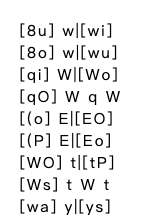Roblox Sheet

Roblox Sheet
Csárdás
Vittorio Monti
Mararanasan mo ang Csárdás ni Vittorio Monti sa isang ganap na bagong paraan! Gamitin ang iyong keyboard upang maglaro ng Csárdás Roblox Piano Sheets sa Virtual Keyboard Piano. Kung ikaw man ay isang Roblox piano game player o nais mag-practice ng mga klasikong piraso, ang Csárdás Roblox Piano Sheet ay perpekto para sa iyo, ginagawa itong madali upang mag-advance mula sa beginner hanggang expert. Ang Csárdás ay matatagpuan sa TOP 100 Roblox Piano Sheets, kasama ang maraming madaling piraso ng klasikal, pop, Christmas songs, at Disney collections na maaari mong laruin!
38 pagtingin
Roblox Sheet

Roblox Sheet
Die Csardasfürstin
Emmerich Kalman
Mararanasan mo ang Die Csardasfürstin ni Emmerich Kalman sa isang ganap na bagong paraan! Gamitin ang iyong keyboard upang maglaro ng Die Csardasfürstin Roblox Piano Sheets sa Virtual Keyboard Piano. Kung ikaw man ay isang Roblox piano game player o nais mag-practice ng mga klasikong piraso, ang Die Csardasfürstin Roblox Piano Sheet ay perpekto para sa iyo, ginagawa itong madali upang mag-advance mula sa beginner hanggang expert. Ang Die Csardasfürstin ay matatagpuan sa TOP 100 Roblox Piano Sheets, kasama ang maraming madaling piraso ng klasikal, pop, Christmas songs, at Disney collections na maaari mong laruin!
21 pagtingin



















